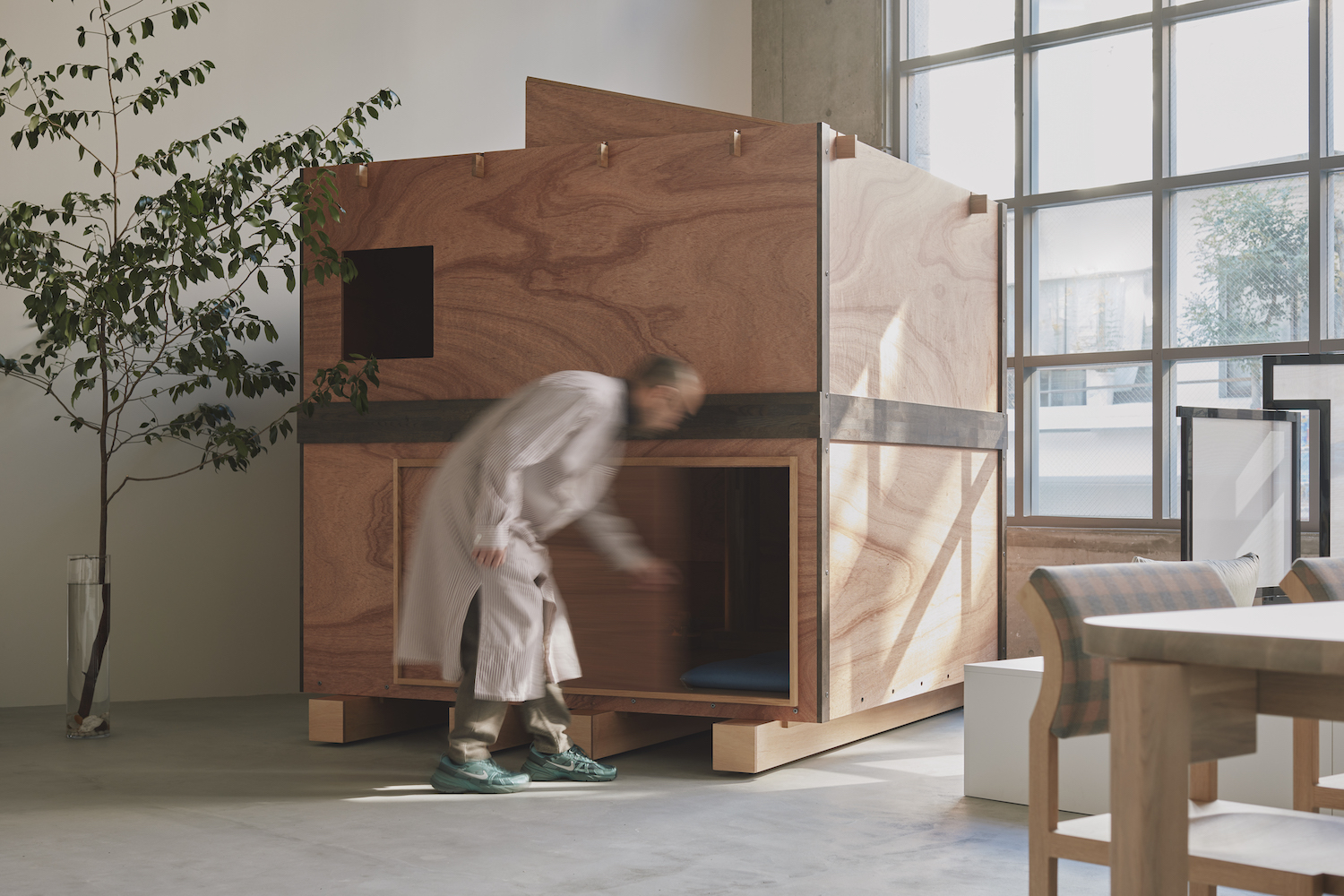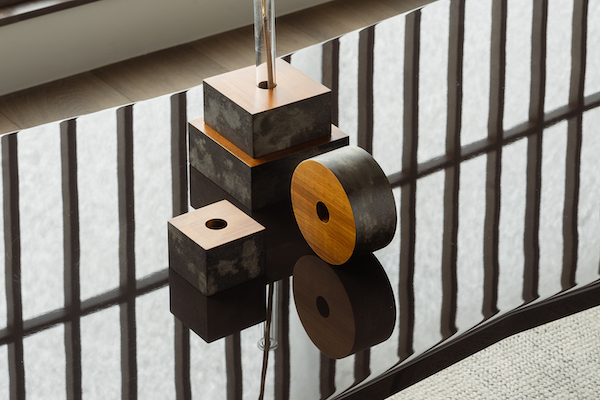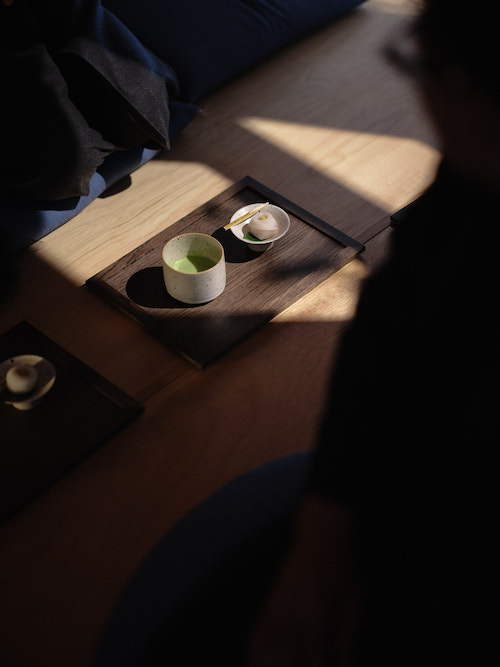

In October 2024, Karimoku Furniture Inc. launched a new project titled “KARIMOKU RESEARCH.” The Survey at the core of the project takes up four themes a year, and is conducted in partnership with creators, designers, artists, companies, and other parties, both inside and outside Japan, on each theme. The insights obtained from the Survey provide the basis for the display and development of new solutions that are not confined to furniture.
The theme of the second Survey is NEW TRADITION. We tackled it together with researchers from WAKA WAKA, a design studio whose activities are based in Los Angeles. The work resulted in the birth of 19 items that reinterpreted the traditional Japanese lifestyle and proposed a new style that mixed in Western outlooks from WAKA WAKA’s center in LA.
Part I of this article described how Karimoku Furniture and WAKA WAKA became acquainted and promoted a project together. Part II takes another look back at the KARIMOKU RESEARCH Tradition project and delves deeper into its results and future possibilities.

.jpg)
WAKA WAKA’s Shinichiro Okuda commented on cultural differences between the two countries. Prefacing his remarks by noting the difficulty of defining “tradition,” he went on to say that, while there were almost no times when he felt “tradition” in his life in the United States, “tradition” was ubiquitous in Japan.
“For example, when I go to a restaurant in Japan, there are traditional chopsticks, bowls, and cups. And when I go to my grandmother’s house, there are some bamboo-work baskets. I have not seen such things very much in the United States. When traditional objects are in your surroundings, you naturally acquire a respect for them. I think this is linked to more of a difference in everyday spirituality, in the form of concern for others. To offer another example, while there are cafes in both the States and Japan, when you buy a sandwich or other item for take-out from a Japanese cafe, the employee will hand you a paper bag with the end folded over. This sort of thoughtfulness is something you will never find in the States.” (WAKA WAKA, Okuda)
Okuda also said tradition was interesting for simultaneously having two mutually opposed aspects or vectors, one oriented to protect the know-how and spirit that have been carried on for decades or centuries, and the other, to reverse and break down the buildup of the past.
“If there were only one vector, there would be no discussion. Discussion arises and things move forward precisely because of the clash of mutually opposed values.
“Even if you continue making the same thing, the individuality, talent, values, and interpretation of each and every person are bound to be reflected in the output. That’s exactly why ‘tradition’ is interesting.”
.jpg)

“Tradition” itself has the aspect of overturning what has been transmitted from the past and inducing innovation. At the same time, in NEW TRADITION, the theme of this Survey, abides the idea of interpreting “tradition” more freely and having fun with it while according it respect.
In this connection, the application of polyester resin polishing technology (“poly-polishing”), which became the key point of this collection, could be termed an exceedingly symbolic case.
During the phase of Japan’s economic bubble from the 1980s and into the 1990s, poly-polishing captivated many people. Amidst the enormous changes in people’s lifestyle, demand gradually declined. To prop up the demand, there was much discussion of poly-polishing in Karimoku Furniture. It was a technology at risk of eventually being lost if things did not change. Through this collaboration with WAKA WAKA, the company discovered new possibilities for it.
To carry on the “tradition” of the past and make innovations in it for its transmission into the future—Karimoku Furniture believes they were able to present an ideal solution for the current situation, in which the continued existence of many traditional things is said to be at risk.
WAKA WAKA’s Okuda said that, in addition to the theme of NEW TRADITION, an original concept he called “Atmospherizm” arose in this project, and that he has been unswervingly pursuing it.
This term is obviously a coinage deriving from “atmosphere,” and the concept focuses on the Atmospherizm energy, tone, and mood elements of the space in question. The idea is to redefine these elements and create a new spatial feeling.
In ordinary work for clients, Karimoku Furniture generally receives orders for individual pieces of furniture. This large-scale collection of furniture was a challenging first experience for WAKA WAKA, too. For this reason, in this project, Okuda said that, rather than individual pieces of furniture, he bore in mind designing the atmosphere which the pieces and their whole arrangement would breed.
On the subject of designing atmosphere, Okuda added that the task was essentially the same for furniture, film, and music. At present, he said that he was also working on the development of an original type of Japanese green tea. If this effort is viewed from the perspective of designing atmosphere, it could be regarded as one smoothly linked with the construction of tea ceremony rooms and the furniture used in them.
At present, Karimoku Furniture is engaged in a fast-paced adjustment in preparation for sales of the above collection. It hopes to launch the sales before the end of this year. Going forward, it plans to renovate an old townhouse in Kyoto while further expanding the KARI KARI MOKU MOKU WAKA WAKA collection. One could also sense an eagerness to build a showroom-like space embodying Atmospherizm. Such new directions could also be regarded as one of the results of Survey 01: NEW TRADITION.
As the evolution of Survey 01: NEW TRADITION continues, the company is starting a new installment with a new theme: Survey 02: TIMELESS CHANGE. In this survey, it will also commence Resemblance of Time, a program to be held simultaneously with STAKKO Chunks & Blocks, a new exhibition.
New possibilities are opening up in succession due to the collaboration between various creators and Karimoku Furniture. Please keep an eye on the future progress of KARIMOKU RESEARCH.
*note
All the KARI KARI MOKU MOKU WAKA WAKA collection has now evolved into a new brand. Launched on June, 2025, “wagetsu わ月” carries forward the creativity and reinterpretation of traditional Japanese furniture that first appeared in the exhibition.